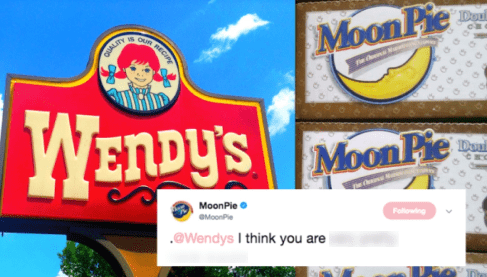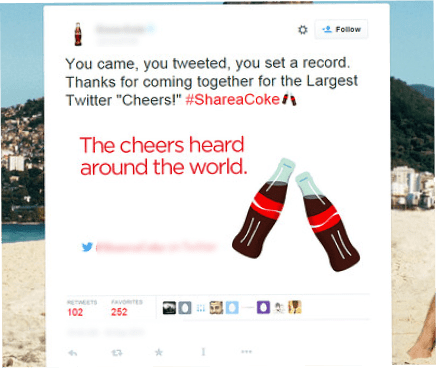- What is the role of public relations?
Public relations (PR) plays a critical role in the success of businesses and organizations. It helps define an entity’s brand, promote its messaging, and anticipate (as well as minimize) the impact of any unfavorable publicity.
Distinguishing between PR and advertising is important; they are not the same. PR involves earned media, which is media that results from providing journalists with information through pitches, interviews, press releases, and other such avenues, whereas advertising is paid media. The two can be used together, but they are not synonymous.
- What are examples some examples of public relations?
Three primary examples of PR activities are issuing press releases, maintaining media relations, and managing crisis communications.
Press releases are written announcements that organizations deliver to journalists and media outlets and that provide information about newsworthy happenings at that organization, such as a significant new hire, the introduction of a new product, or an award received.
Media relations involves developing relationships with journalists, bloggers, editors, and other content producers who cover topics of interest to a company and its clients and pitching timely, relevant stories to them (as well as scheduling interviews with key staff members) in an effort to generate positive media coverage.
Crisis communications requires creating a multipronged, proactive plan for dealing with potential public relations crises, including response plans, to protect a company or client’s
- Is PR a good career choice?
PR can be a great career path, offering many exciting opportunities in a variety of areas. In fact, U.S. News & World Report currently ranks PR as the #3 best creative and media job. And individuals interested in pursuing PR can choose from a number of career paths.
For example, one option is to work for an agency, concentrating on PR activities for multiple clients at once as part of a team, with each person managing a particular aspect of a client’s promotional outreach.
Another possibility is to work as in-house PR for a brand, either managing the business’s PR program single-handedly or coordinating outside agencies to work together on the company’s behalf.
Some PR specialists work as freelancers, prioritizing one or two clients and handling pitching, media relations, and follow-up on their behalf.
PR can also be just one of numerous tasks in a professional’s communication mandate within a company or nonprofit organization.
- What does good PR look like?
Whether PR qualifies as “good” depends on the particular client and their needs.
Most often, good PR takes the form of proactive, positive communication for a brand that occurs on a regular basis. Examples of effective PR include the following:
- Positive stories about a brand appearing in targeted publications
- People talking favorably about a brand (e.g., “positive buzz” about a company)
- A company’s leadership being asked to give their opinions/quotes on related topics
- An increase in speaking engagements
- More extensive television/video/podcast coverage
In a crisis PR situation, on the other hand, the definition of “good PR” might be getting an unfavorable story about a brand out of the media, waiting for the commotion to die down, and then beginning the hard work of repairing that company’s reputation.
In any situation, good PR always involves the combination of effective research—into the publications, editors, bloggers, and journalists who cover the topics of interest to a business or its clients—persistence in building a real, meaningful relationship with these individuals, and understanding what truly makes a story unique, interesting, and inherently pitchable.
- How I work in PR?
Anyone interested in working in PR should take relevant classes, including those related to communications, media studies, mass communications, and marketing. Such courses provide a core base of knowledge from which to build an applicable skill set, and employers look for this kind of training.
Also, taking advantage of PR internships at different organizations provides real-world experience that not only looks good on a resume but can also facilitate something even more valuable—the opportunity to discover which type of PR is most appealing personally. Interning in various situations can reveal the demands and style of different PR roles and responsibilities. For example, if someone likes working for multiple clients at once, a PR agency could be a good choice. But if handling PR for a single client or brand sounds more interesting, then being an in-house PR specialist for a business or nonprofit agency might be preferable.
- What is the digital role of a public relations?
The digital revolution has changed the business of Public Relations (PR) forever. Today, PR professionals must deal with not only traditional forms of media but also communications channels that have a habit of changing practically overnight. PR has always been about relationships and about using those relationships to promote your brand and your company. In the past, a PR representative might have needed simply to maintain a good rapport with a few members of the media, know how to write a compelling press release, and maybe do an occasional interview. That era is over.
PR is now a complicated and constant effort. It involves increasing measurable return on investment through new digital media content and innovative marketing approaches. It still requires all the traditional relationships, plus an abundance of new ones on social media, from old-school reporters to social influencers. It involves everything from Search Engine Optimization (SEO) to snarky Twitter brands. And now more than ever, PR is tasked with projecting a company’s positive values as the public increasingly demands that businesses do real good in the world and that what they see and hear about various companies is not just for show.

Public Relations

The digital revolution has changed the business of Public Relations (PR) forever. Today, PR professionals must deal with not only traditional forms of media but also communications channels that have a habit of changing practically overnight. PR has always been about relationships and about using those relationships to promote your brand and your company. In the past, a PR representative might have needed simply to maintain a good rapport with a few members of the media, know how to write a compelling press release, and maybe do an occasional interview. That era is over.
PR is now a complicated and constant effort. It involves increasing measurable return on investment through new digital media content and innovative marketing approaches. It still requires all the traditional relationships, plus an abundance of new ones on social media, from old-school reporters to social influencers. It involves everything from Search Engine Optimization (SEO) to snarky Twitter brands. And now more than ever, PR is tasked with projecting a company’s positive values as the public increasingly demands that businesses do real good in the world and that what they see and hear about various companies is not just for show.
PR is Different From Branding and Marketing

We need to first be specific about what PR encompasses and what it means for your company. PR, branding, and marketing often overlap, sometimes a great deal, but each has its own important role, and the professionals in all three areas must learn to be flexible and dynamic in the face of the accelerating digital revolution.
One of the best ways of distinguishing these three areas is by clarifying their differences and defining what each one focuses on. PR and branding are perhaps the most similar, but PR is primarily outward facing, while branding is much more inward facing. Branding often involves the overall “feel” that a company wishes to present to the public, such as via logos, design, and other visual aspects of its “look.” PR is a brand’s communication practices and apparatus and is responsible for delivering information about the company to the public. Both involve communication, but PR is largely direct, while branding is almost entirely indirect.
Additionally, marketing is different from both PR and branding in that the intent of marketing is almost always to drive and increase sales. All three have an impact on sales (just consider the importance of branding to Apple and Coca-Cola), but sales are marketing’s primary focus. So, one could say that branding sets the tone, PR provides the information, and marketing closes the deal.
Also important to recognize is the how of PR—that is, the manner and medium through which a company’s messages reach the market.
There are three recognized types of PR:
- Owned PR
- Earned PR
- Paid PR
Owned refers to what you can distribute through your own means, via options you fully control, such as press releases and other materials and information produced in-house. This would include content for your social media channels, such as videos on YouTube.

Demands of the Digital Age
So how has PR changed in the digital age?
01
It is now occurring all the time. This is due in part to the nature of the modern news cycle, where fresh information from or about a company could catch the public’s attention at any moment. A lot of it is the result of the rise of social media and the growing need for companies to be permanently “on,” meaning ready to engage with the public at a moment’s notice, whether responding to a crisis, participating in a trend, or posting a funny meme. PR can’t take weekends off anymore, because in some cases, Monday might be too late to act.
02
The former model of a top-down form of PR is absolutely gone. Whereas previously, a company’s PR strategy would essentially be “Let’s put our info out there and hope it sticks,” PR now requires a more equalized back-and-forth with the public. Anyone with a social media account can act as a citizen journalist, and PR departments must often respond to such individuals with the same seriousness and professional intent as they do to traditional news media. In fact, PR departments must be even more careful with the public than they are with standard media outlets because while the latter are (hopefully) bound by ethical constraints and professionalism, a member of the general public likely has no such restraints.
03
Thanks to the internet, your PR efforts will, by necessity, be widely distributed. Realistically, your message needs to be everywhere if your business just wants to keep up. You still need to give the necessary attention to traditional media (e.g., publishing press releases, maintaining relationships with journalists and media sources, organizing public events to promote your company), but you must also have accounts on multiple social media channels (and monitor them), while keeping an eye on your reviews, simultaneously boosting your SEO efforts on Google, and performing numerous other such tasks.
04
Your PR efforts need to be coordinated with those of your branding and marketing departments to make sure you’re not getting in your own way and are maintaining the consistency of your brand throughout all public-facing activities. The digital revolution has turned PR into a constant juggling act, where one dropped tweet or bad press release could spell disaster. Constant vigilance is imperative.
Talk to an Expert Today for Building your Public Relations
Reactive versus Proactive PR
Content Marketing: Companies Looking Trendy!

Your Online Reputation: 7 Things CEOs Must Know
Integrating SEO and Values into Your PR
Perhaps the most important new goal of PR in the digital era relates to how it can affect your company’s ranking on search engines, primarily Google Search. SEO must be integrated into any PR strategy because of its potential to not only improve your company’s standing in Google Search results but also influence what content about your business appears in those searches.
Now more than ever, customers both appreciate and reward companies that have positive, supportive values. Your PR efforts will be their most efficient and effective when they tie into any good deeds your business does. Today, customers expect the companies they patronize to be responsible, support their employees, and take their impact on the world seriously.
The best form of PR is when the public sees a business actually doing the right thing and working hard to assume a stewardship role in the world.
This is where the expertise Blue Ocean Global Technology can helpyou and your company. One of the keys to ensuring that your PR efforts are effective and truly reflect your company’s core worth and values is finding the right people to work with, whether for creating new promotional content or developing a strategy to improve your SEO game so your existing content reaches the right audiences.
PR in the business world has never been more complicated, nor has it ever been more scrutinized. Blue Ocean Global Technology can match your company with the skilled individuals and teamsyou need to gain the right kind of attention for your business, move you up in online search results, and connect with the customers you want to help.






